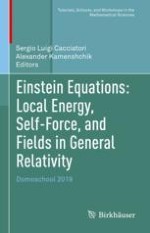This volume guides early-career researchers through recent breakthroughs in mathematics and physics as related to general relativity. Chapters are based on courses and lectures given at the July 2019 Domoschool, International Alpine School in Mathematics and Physics, held in Domodossola, Italy, which was titled “Einstein Equations: Physical and Mathematical Aspects of General Relativity”. Structured in two parts, the first features four courses from prominent experts on topics such as local energy in general relativity, geometry and analysis in black hole spacetimes, and antimatter gravity. The second part features a variety of papers based on talks given at the summer school, including topics like:
Quantum ergosphereGeneral relativistic Poynting-Robertson effect modellingNumerical relativityLength-contraction in curved spacetimeClassicality from an inhomogeneous universe
Einstein Equations: Local Energy, Self-Force, and Fields in General Relativity will be a valuable resource for students and researchers in mathematics and physicists interested in exploring how their disciplines connect to general relativity.
